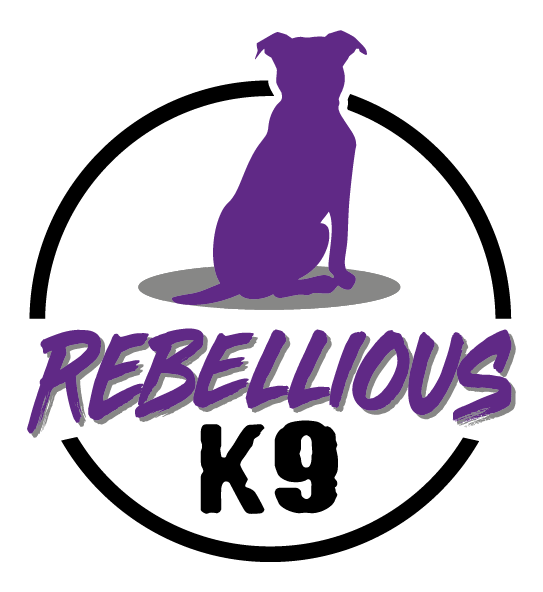Rescue Rehab
As someone who worked in rescue for many years, and still foster dogs when I can, I completely understand how overwhelming it can be when you adopt a new dog into your home.
The goal with this program is to give newly adopted dogs the best shot at integrating into their new homes and family, to prevent as many dogs as possible from ending back in the shelter.
What is covered in Rescue Rehab?
House Manners
Some of the main things people struggle with when bringing a new rescue into their home is house manners. Destructive behaviours in the house, rushing through doorways, jumping on countertops and furniture, etc.
While we all want our dogs to be part of the family and have them on the couch and bed with us, it’s important for your new dog to understand the black and white (yes and no) before the grey (sometimes or ‘when I say so’). All dogs do best with clear boundaries allows us to set the dog up for success in their training and integration into their new home.
Loose Leash Walking
We want to be able to take our new best friends out on walks, hikes, café trips, and more; all of which can be accomplished with this program!
Leash manners is probably the number 1 thing dog trainers are contacted about. Through the Rescue Rehab program we teach our new family members how to understand leash pressure and that they have complete control over what happens with that lead. Teaching your new rescue dog how to walk nicely on the lead will be the cornerstone of a lot of their training, once they understand this, the rest of their training becomes a lot more simple.
Recall
Recall is so important for any dog, but especially rescue dogs. With no definitive information about their background, we need to ensure your new family member has near flawless recall before they come off the lead in a public place.
Using leash pressure and high value rewards we work on training that recall alone, in public, around distractions, and at group classes to ensure your new family member will come back under any circumstances.
Functional Obedience
Functional obedience is exactly that; rather than teaching obedience you won’t use in your day to day life, we go over obedience that you will be useful daily. This will include:
Stand: to assist with grooming, vet visits, physical exams, and builds trust.
Leave It or Out: to prevent your dog from eating or ingesting things they aren’t meant to on walks/hikes. This command will also help your dog’s impulse control, increases their off leash safety, and can increase your bond with your dog.
Down-stay: this plays a large part in your dog’s impulse control in and outside of the house, strengthens communication, allows your to keep your dog safe in dangerous situations, improves handling in busy areas, prevents issues during meals and with guests.
Place or Bed: this command helps dogs find a relaxing spot when guests arrive, facilitating easier interactions, instils patience, encouraging dogs to stay in one spot instead of seeking attention, creates a secure area for dogs to retreat when overwhelmed, curbs jumping, barking, and rushing, promoting better manners, is adaptable for home, public spaces, or training sessions.
Polite interactions
It is vital that your dog understands how to politely interact with people and other dogs, whether they are strangers or already know each other.
At group classes we firstly focus on ignoring other dogs to prevent excitement reactivity and over-arousal. If dogs meet while they are too excited or over-aroused it can lead to aversive interactions, bullying, being too rough, or triggering the other dog in the interaction. You’ll find this is a common occurrence in dog parks, beaches, and often uncontrolled off-lead dogs.
Once your dog no longer cares about being in the presence of other dogs they start to participate in polite meetings with other dogs and teaching them what to do and not to do.
The goal is to have a dog that is neutral to other dogs but will play; however it always important to be realistic about the dog you have, if they are fearful or fear reactive this will take longer and you may need to take baby steps. This is something we discuss in our initial evaluation consult.
How it works:
We start with an initial evaluation, this is where we discuss where your dog is at with their current training, anything you’ve been struggling with, and whether the Rescue Rehab Program is right for your current situation.
The evaluation is $80.
Evaluation
The 1:1 sessions are to work on everything in the home first before we start to tackle the outside world. We lay the ground work for you to be able to seamlessly integrate into group classes. We go over everything listed above and set your dog up for success!
1:1 sessions range from $350-$700, depending on how many you may need.
1:1 Sessions
The group classes allow you to proof all your new training in a controlled environment. We go over all of the functional obedience, recall, loose leash walking and polite interactions as a group as well as a Q&A at the end of each class.
Classes will always be early morning to avoid the heat, with the goal being at least 3 group classes per month.
Group classes will be a 3-monthly subscription at $250, this comes to about $27.70 per class.
Group Classes
We can’t wait to meet you!
Click the link to get in contact and register your interest!





